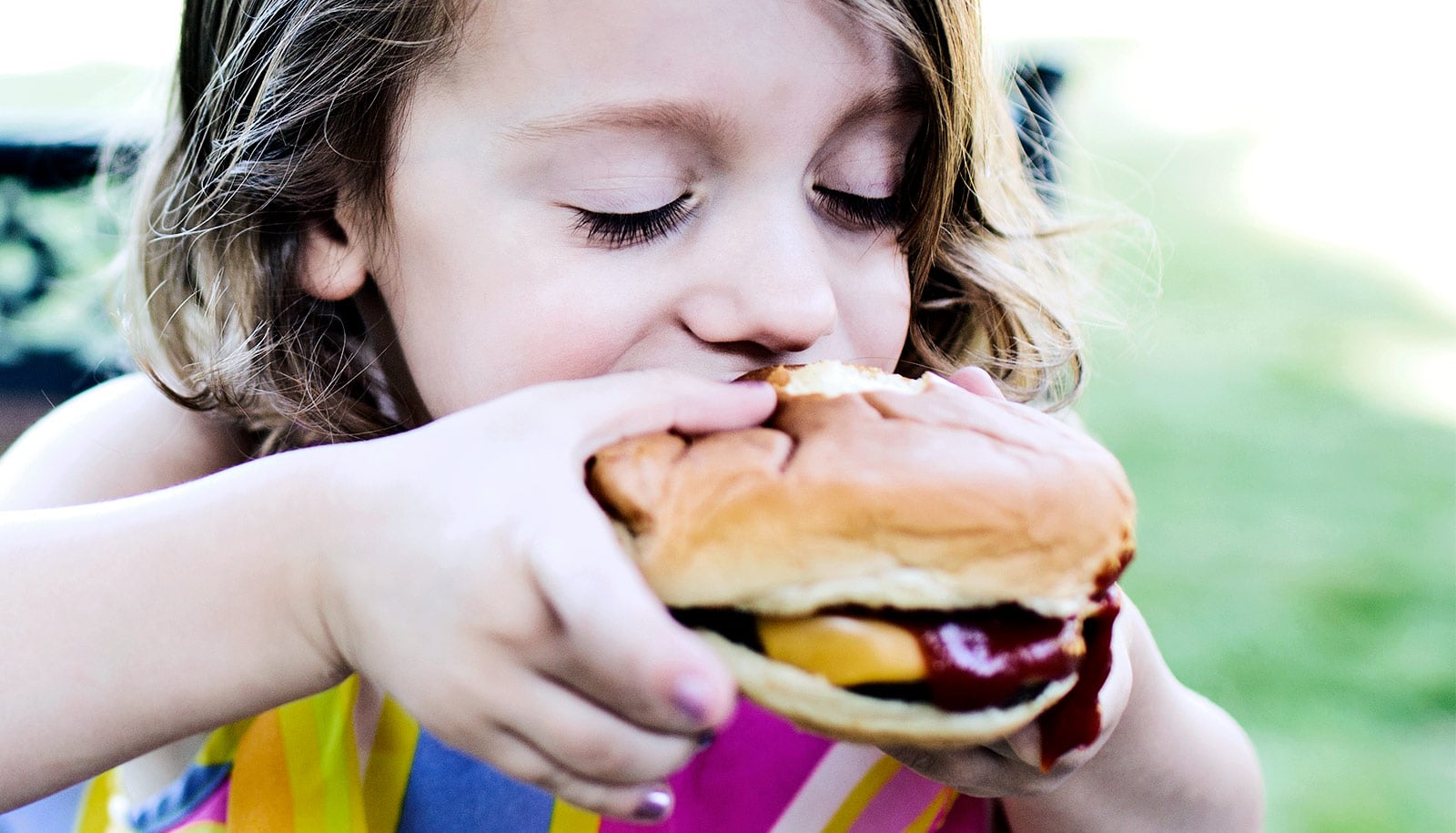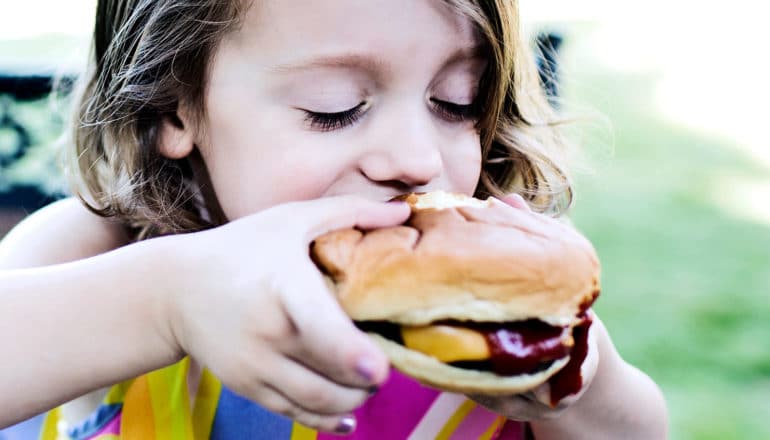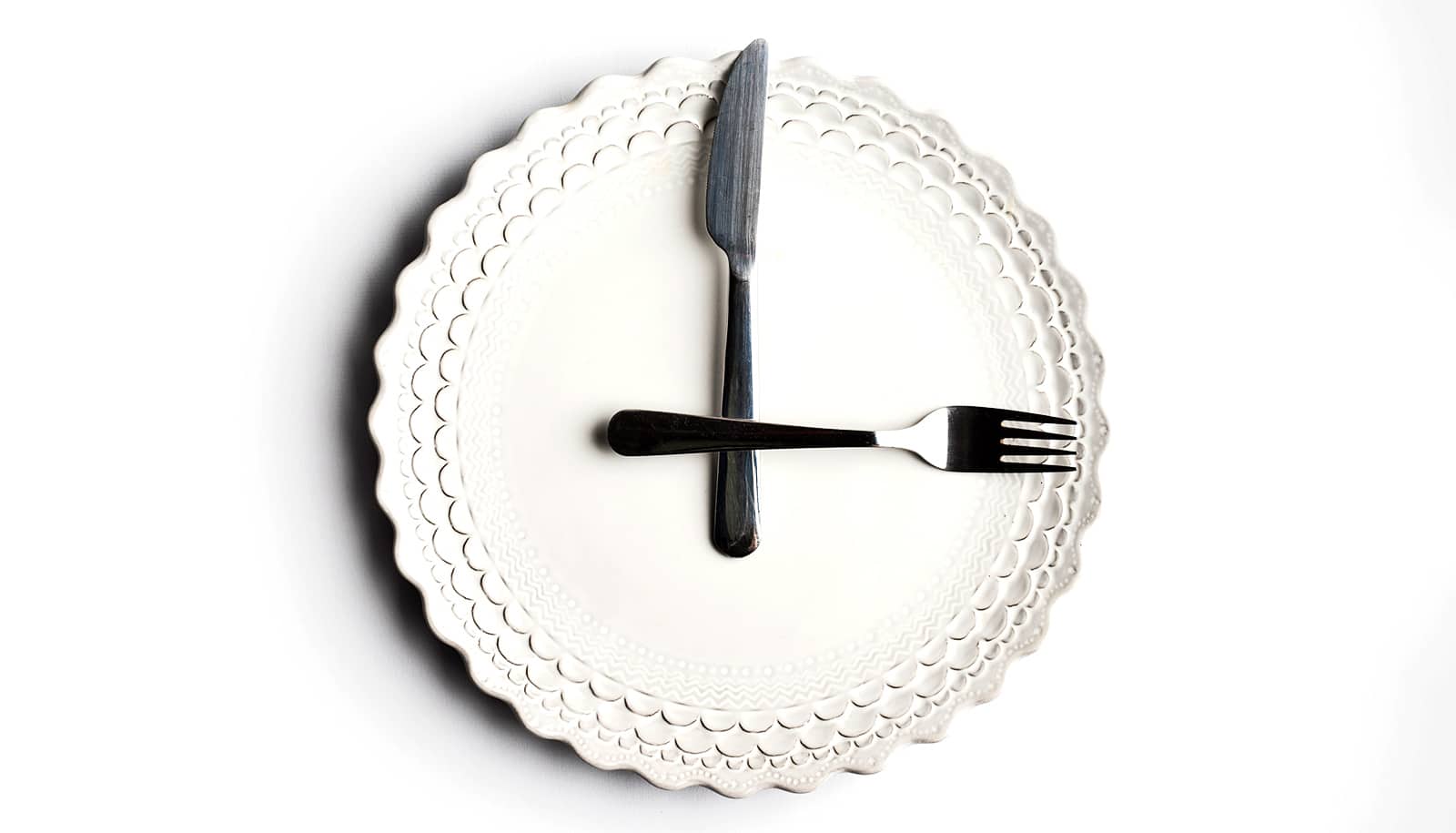
(Credit: Getty Images )
Bigger food portions make preschoolers overeat
Preschoolers don't have as much portion control as we thought, according to a study that found when little kids get more food, they eat more food over time.

Preschoolers may not be as good at resisting large portions of everyday foods as previously thought, according to a new study.
Researchers examined whether the portion size effect—the tendency to eat more when portions are larger—affects children between the ages of three and five.
The researchers found that when they served the children larger portions of typical meals or snacks, they consumed more food, both by weight and calories.
Alissa Smethers, a doctoral student in nutritional sciences at Penn State, says the findings suggest that caregivers should pay close attention to not just the amount of food they serve but also the variety of food.
“It’s hard to define portions that are appropriate for all preschoolers, since their calorie requirements vary due to differences in height, weight, and activity level,” says Smethers.
“But it’s a good idea to look at the proportions of different foods you’re serving, with fruits and vegetables filling up half the plate and with smaller portions of more calorie-dense foods, as recommended in the USDA MyPlate nutrition guide.”
Strategic portions
The results also suggest that caregivers can use the portion-size effect strategically to help children eat more fruits and vegetables, says Barbara Rolls, director of the Laboratory for the Study of Human Ingestive Behavior.
“The positive side is that you can use the portion size effect strategically, for example by serving larger portions of fruits and vegetables to increase their consumption,” Rolls says. “You can also serve them at the start of the meal or on their own as snacks. When there are no other foods competing with them, kids may be more likely to eat them.”
Smethers says that while researchers knew that adults are likely to eat more when served larger portions of food over time, some thought that young children can sense how many calories from food they need and adjust their eating habits accordingly, a process called “self-regulation.”
To test this theory, previous studies looked at children’s eating habits at one meal or over a single day. But Smethers says it may take longer—up to three to four days—for self-regulation to kick in, so she and the other researchers wanted to study the portion size effect in children across a full five days.
Self-regulation
For the study, which appears in the American Journal of Clinical Nutrition, researchers recruited 46 children between the ages of three and five from childcare centers at the University Park campus for the five-day study, which provided all the children’s meals and snacks.
For one five-day period, children received baseline-sized portions—based on Child and Adult Care Food Program requirements—and during another period had portions that researchers increased in size by 50 percent.
“In the larger portion meals, we wanted to serve portion sizes that the children might encounter in their everyday lives,” Smethers says. “For example, instead of getting four pieces of chicken nuggets, they would get six, for a 50 percent increase.”
During both five-day periods, researchers allowed the children to eat as much or as little of their meals or snacks as they wanted. After the children finished eating, researchers weighed the leftover foods to measure how much each child consumed.
Additionally, each child wore an accelerometer throughout each five-day period to measure their activity levels, and researchers measured their height and weight.
The findings showed that serving larger portions led to the children eating 16 percent more food than when served the smaller portions, leading to an extra 18 percent of calories.
“If preschoolers did have the ability to self-regulate their calorie intake, they should have sensed that they were getting extra over the five days and started eating less,” Rolls says. “But we didn’t see any evidence of that.”
Further, the findings showed that larger portions were more likely to influence children with higher BMI percentiles for their age. Additionally, the portion size effect seemed stronger in children with overweight or obesity than for children without.
“We found that while the portion size effect is powerful overall, some children seemed to be more susceptible to the effect than others,” Smethers says.
“Children who were rated by their parents as more responsive to food when it’s in front of them were also affected more by portion size, while children who were rated as paying attention to whether or not they were actually hungry were less affected by portion size.”
Additional coauthors are from Penn State and Columbia University Irving Medical Center. The National Institutes of Health and the United States Department of Agriculture helped support the work.
Source: Penn State
The post Bigger food portions make preschoolers overeat appeared first on Futurity.
Share this article:
This article uses material from the Futurity article, and is licenced under a CC BY-SA 4.0 International License. Images, videos and audio are available under their respective licenses.


